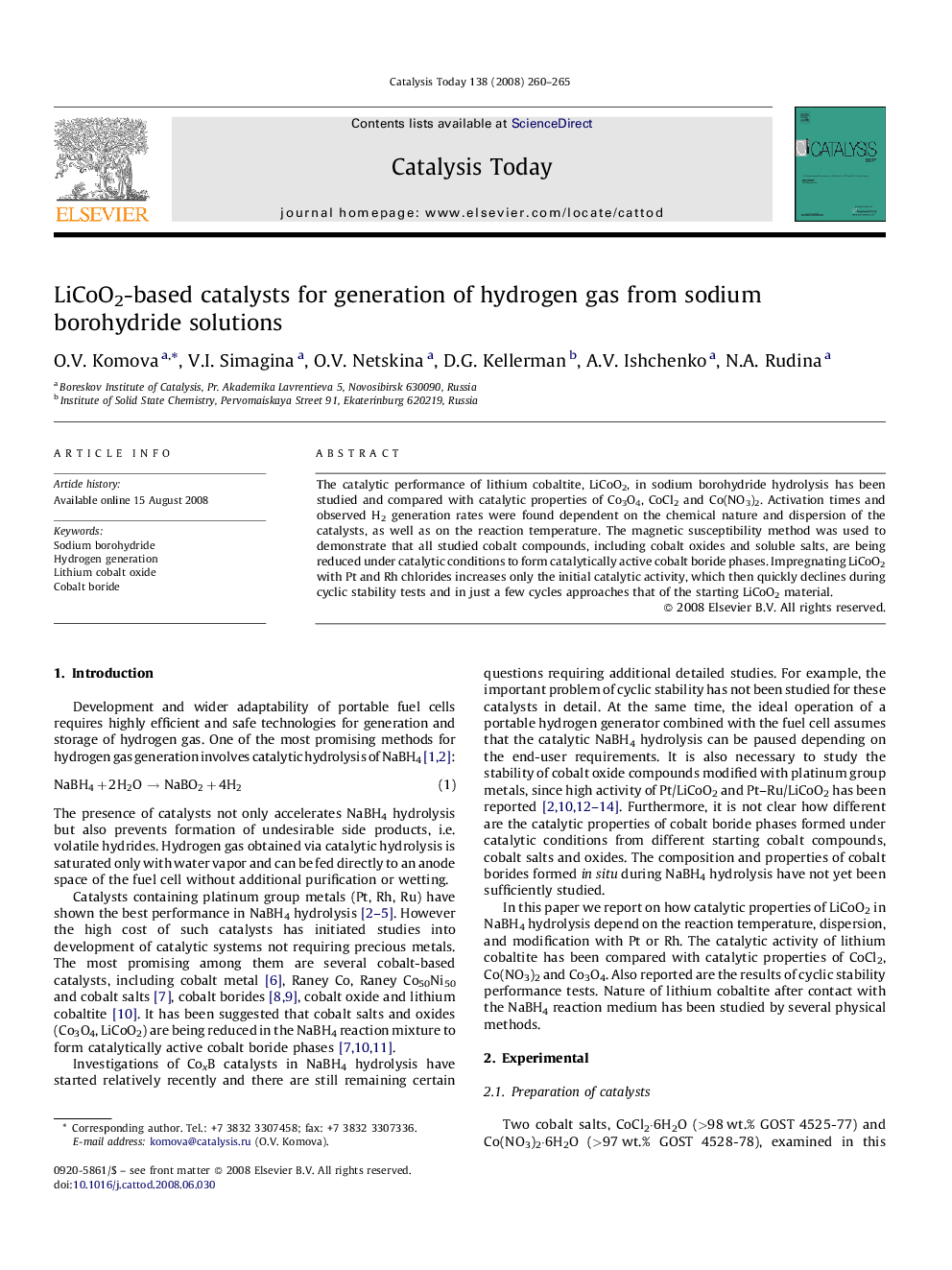| Article ID | Journal | Published Year | Pages | File Type |
|---|---|---|---|---|
| 57808 | Catalysis Today | 2008 | 6 Pages |
The catalytic performance of lithium cobaltite, LiCoO2, in sodium borohydride hydrolysis has been studied and compared with catalytic properties of Co3O4, CoCl2 and Co(NO3)2. Activation times and observed H2 generation rates were found dependent on the chemical nature and dispersion of the catalysts, as well as on the reaction temperature. The magnetic susceptibility method was used to demonstrate that all studied cobalt compounds, including cobalt oxides and soluble salts, are being reduced under catalytic conditions to form catalytically active cobalt boride phases. Impregnating LiCoO2 with Pt and Rh chlorides increases only the initial catalytic activity, which then quickly declines during cyclic stability tests and in just a few cycles approaches that of the starting LiCoO2 material.
